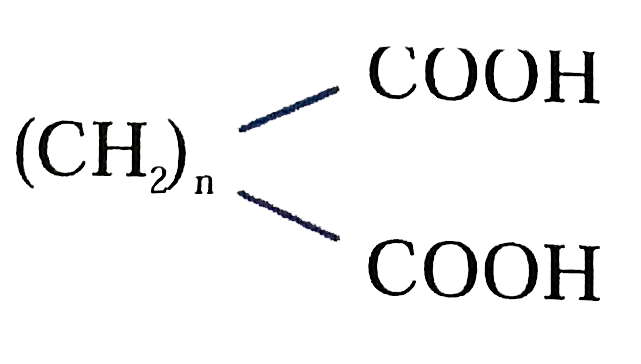Which β-keto acid shown will not undergo decarboxylation?


Ph−O∣∣C−CH2−CO2H
CH3−O∣∣C−CH2−CO2H
The correct Answer is:B
To determine which beta-keto acid will not undergo decarboxylation, we need to understand the structure of beta-keto acids and the conditions under which decarboxylation occurs.
1. Identify Beta-Keto Acids:
- Beta-keto acids are compounds that contain a carboxylic acid group (-COOH) and a ketone group (C=O) at the beta position relative to each other. The structure can be represented as R1C(=O)C(=O)OH, where R1 is any alkyl or aryl group.
2. Understand Decarboxylation:
- Decarboxylation is the process where a carboxyl group (-COOH) is removed from a molecule, releasing carbon dioxide (CO2). For beta-keto acids, this typically occurs when the resulting structure after decarboxylation can stabilize the remaining molecule.
3. Analyze the Structures:
- For each beta-keto acid structure, we need to analyze whether the decarboxylation will lead to a stable compound or if it will violate any rules of organic chemistry, such as the Bredt's rule.
4. Bredt's Rule:
- Bredt's rule states that a double bond cannot be formed at a bridgehead position in a bicyclic compound. If the decarboxylation of a beta-keto acid leads to a structure that has a double bond at a bridgehead carbon, it will not occur.
5. Evaluate Each Beta-Keto Acid:
- Examine each beta-keto acid provided in the question. Identify which one, upon decarboxylation, would lead to a structure that violates Bredt's rule.
6. Conclusion:
- The beta-keto acid that has a structure leading to a double bond at a bridgehead carbon after decarboxylation will not undergo decarboxylation. This is the compound that violates Bredt's rule.
Final Answer:
The beta-keto acid that will not undergo decarboxylation is the one that leads to a structure violating Bredt's rule.
- Beta-keto acids are compounds that contain a carboxylic acid group (-COOH) and a ketone group (C=O) at the beta position relative to each other. The structure can be represented as R1C(=O)C(=O)OH, where R1 is any alkyl or aryl group.
- Decarboxylation is the process where a carboxyl group (-COOH) is removed from a molecule, releasing carbon dioxide (CO2). For beta-keto acids, this typically occurs when the resulting structure after decarboxylation can stabilize the remaining molecule.
- For each beta-keto acid structure, we need to analyze whether the decarboxylation will lead to a stable compound or if it will violate any rules of organic chemistry, such as the Bredt's rule.
- Bredt's rule states that a double bond cannot be formed at a bridgehead position in a bicyclic compound. If the decarboxylation of a beta-keto acid leads to a structure that has a double bond at a bridgehead carbon, it will not occur.
- Examine each beta-keto acid provided in the question. Identify which one, upon decarboxylation, would lead to a structure that violates Bredt's rule.
- The beta-keto acid that has a structure leading to a double bond at a bridgehead carbon after decarboxylation will not undergo decarboxylation. This is the compound that violates Bredt's rule.
The beta-keto acid that will not undergo decarboxylation is the one that leads to a structure violating Bredt's rule.
Topper's Solved these Questions
- CARBOXYLIC ACID AND THEIR DERIVATIVES BOOK - MS CHOUHANCHAPTER - CARBOXYLIC ACID AND THEIR DERIVATIVES EXERCISE - Level 1 (Q.1 To Q.30)
1 Videos
- CARBOXYLIC ACID AND THEIR DERIVATIVES BOOK - MS CHOUHANCHAPTER - CARBOXYLIC ACID AND THEIR DERIVATIVES EXERCISE - Level 1 (Q.31 To Q.60)
1 Videos
- CARBOHYDRATES BOOK - MS CHOUHANCHAPTER - CARBOHYDRATES EXERCISE - MULTIPLE CORRECT CHOICE TYPE (INTEGER TYPE)
1 Videos
- CARBOXYLIC ACIDS AND THEIR DERIVATIVESBOOK - MS CHOUHANCHAPTER - CARBOXYLIC ACIDS AND THEIR DERIVATIVESEXERCISE - ADDITIONAL OBJECTIVE QUESTIONS (Matrix Match Type)
1 Videos
Similar Questions
Knowledge Check
Which β-keto acid shown will not undergo decarboxylation?
A B
B CPh−O∣∣C−CH2−CO2HDCH2−O∣∣C−CH2−CO2H
CPh−O∣∣C−CH2−CO2HDCH2−O∣∣C−CH2−CO2HWhich of the following β-keto carboxylic acid does not undergo decarboxylation on heating ?
A B
B C
C DNone of these
DNone of theseWhich of the following will undergo decarboxylation easily?
AC6H5CO−CH2−COOHBC6H5−CO−COOHCC6H5−C∣OHH−COOHDC6H5−C∣NH2H−COOH
Which of the carboxylic acid among following pairs will undergo decarboxylation readily?

View SolutionWhich one of the following acids undergoes decarboxylation on strong heating:
View SolutionWhich of the following carboxylic acids do not undergo decarboxylation simply on heating?
View SolutionWhich of the following compounds cannot undergo decarboxylation on heating ?
View Solutionthe compound that readily undergoes decarboxylation is
View Solution


